And like I said before remember to click your heels three times as well (rofl)
Gotta do that after releasing foot from brakes and within two seconds. Good luck y'all.
And like I said before remember to click your heels three times as well (rofl)
Forgot to mention, you have to do each set within 5 seconds, so for example do the parking light to off 5 times within 5 seconds and so forth. At the end after make sure to disengage the parking brakes before you let off the brake pedal.
Yeah, it looks like the Aussie's have an inboard DRL that is not on US spec cars that looks like it is on all the time when driving. But at least it's not the headlights.
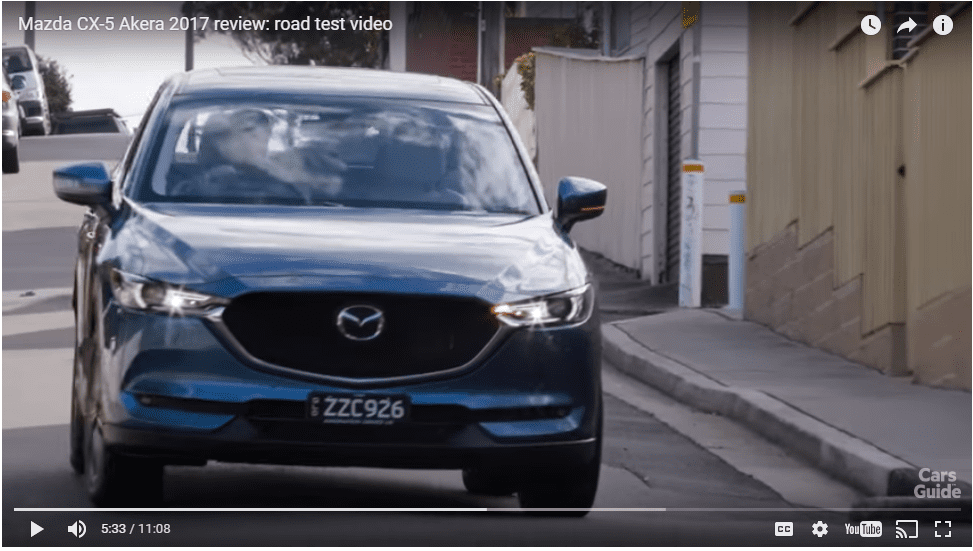
Looks like the higher-trim 2017 CX-5's with LED Signature accent strips in Australia and UK keep the "inboard" LED DRLs found on US Touring/Sport. For some reason that "inboard" DRLs are missing from our GT with LED Signature accent strips.Looks like UK has the same setup as Australia.
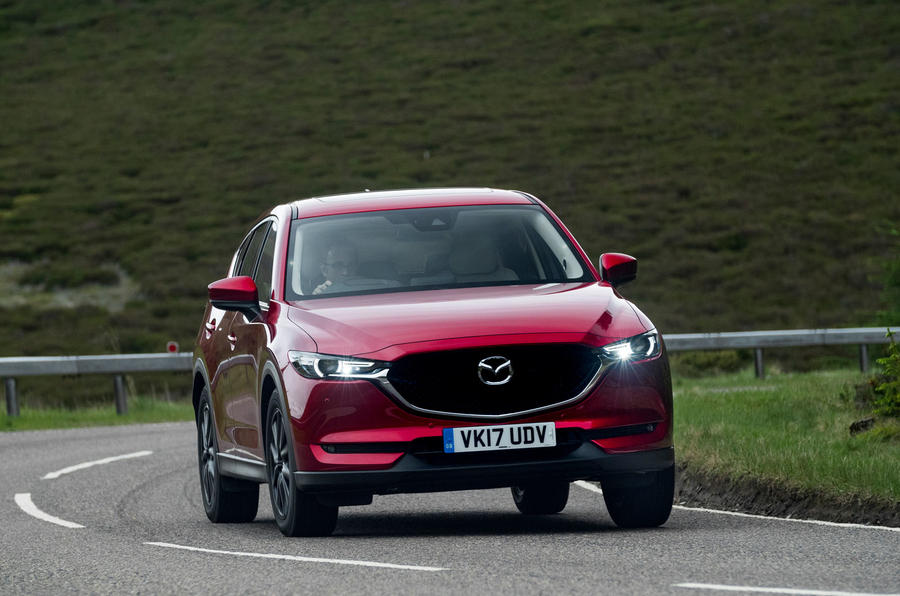
Although 2017 CX-5 owner's manual says the front turn signal/parking light uses dual-filament 7444NA bulb, but the pictures I took earlier on a 2017 CX-5 GT suggests otherwise:
Light switch at parking light position:
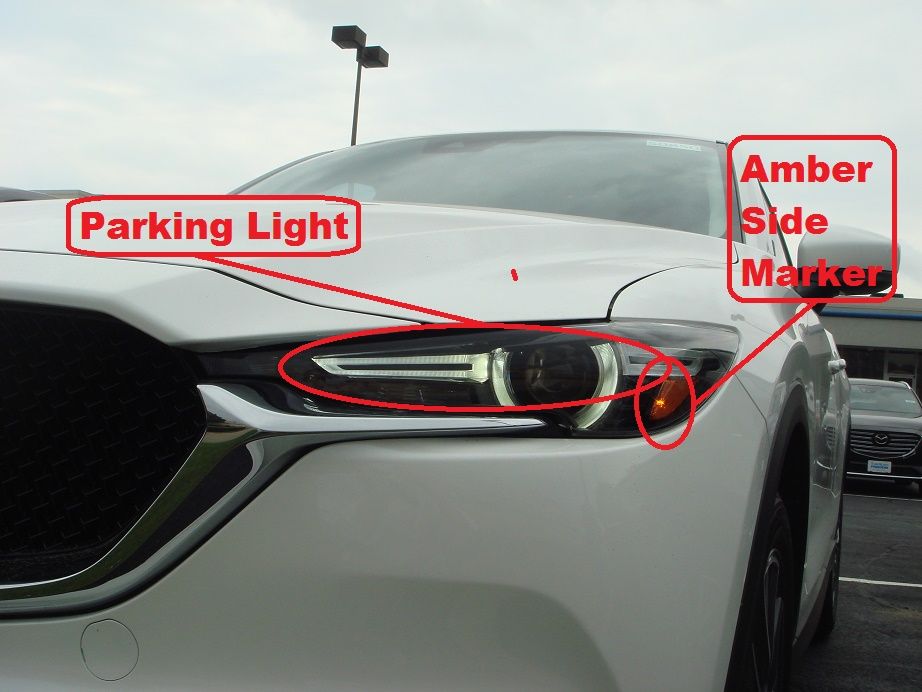
Light switch at headlight on position (low beam):
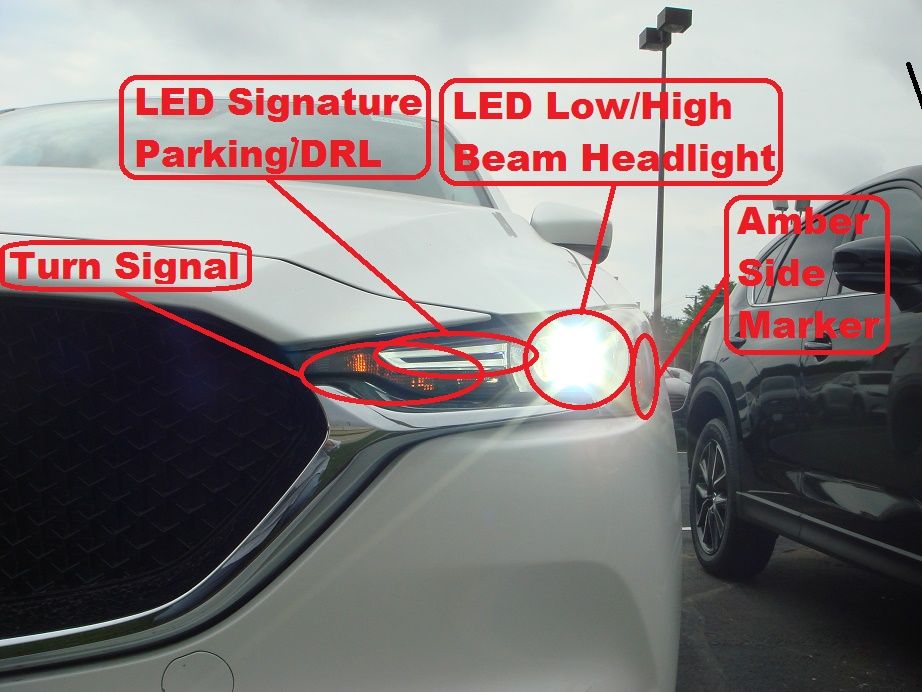
LED Signature accent strips added on GT partially block turn signal and LED DRL location on Touring/Sport. And you can see how small and dim the turn signal is on GT comparing to Touring/Sport when the headlights are on!
The LED DRL space on Touring/Sport between headlight and amber parking/turn signal looks like unused on GT.
View attachment 217137 View attachment 217136
Here are some pictures from 2017 CX-5 Touring showing whenever DRL function is on, both LED DRLs and LED low-beam headlights are simultaneously on! You can imagine how GT DRLs work by replacing Touring LED DRLs with GT's LED Signature DRLs.
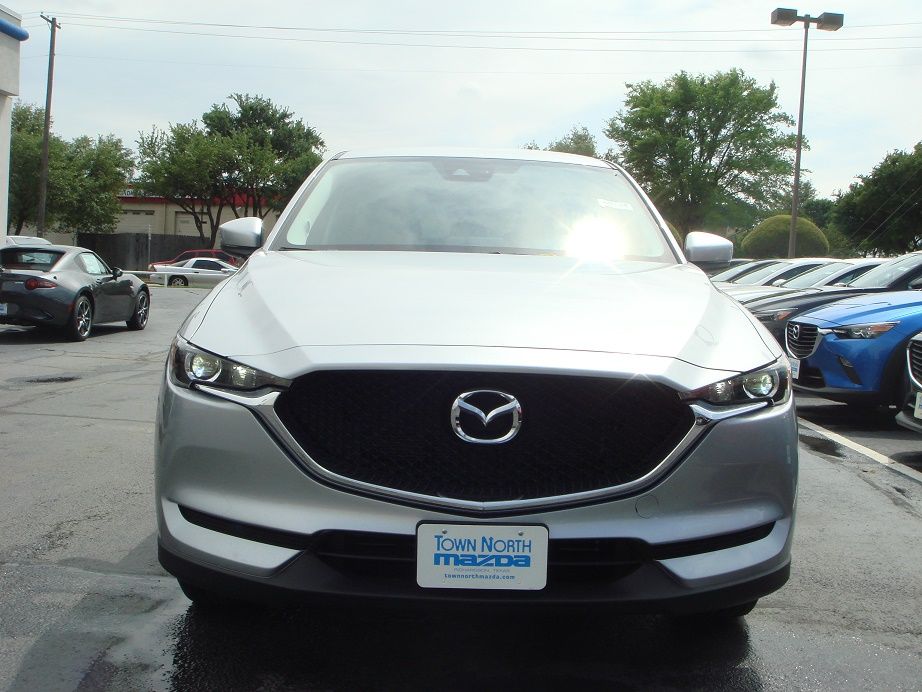
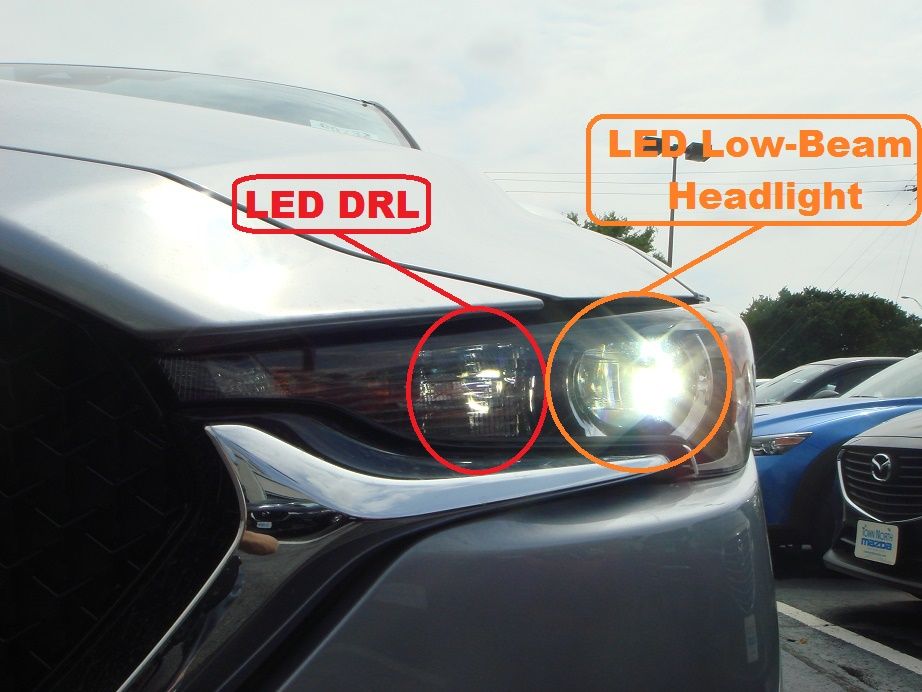
Here's what the front lights look like when light switch is at parking light position without DRL function when car is in stationary:
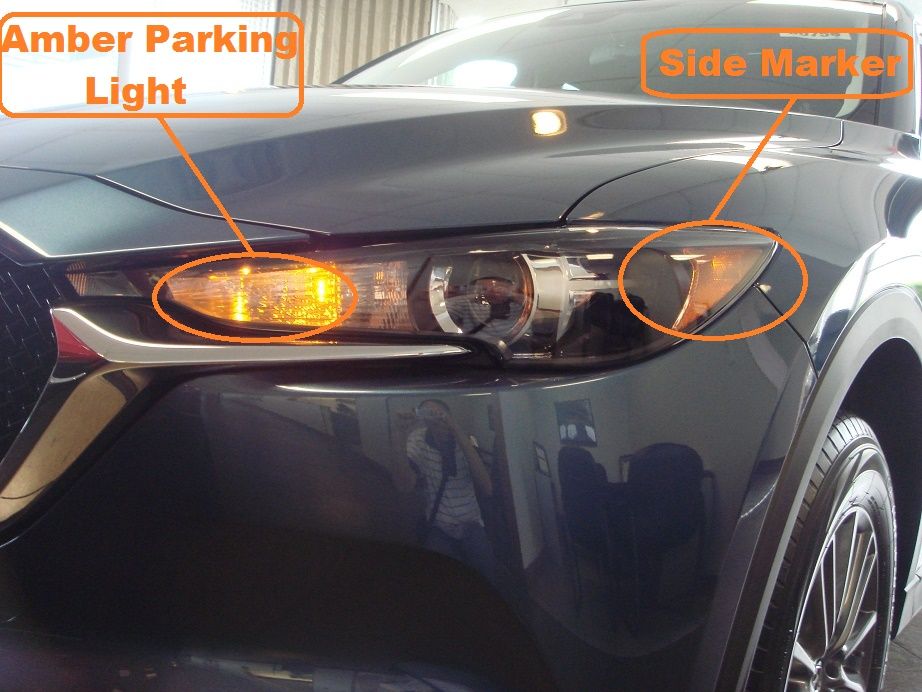
Here's what the front lights look like when light switch is at headlight-on position without DRL function when car is in stationary:
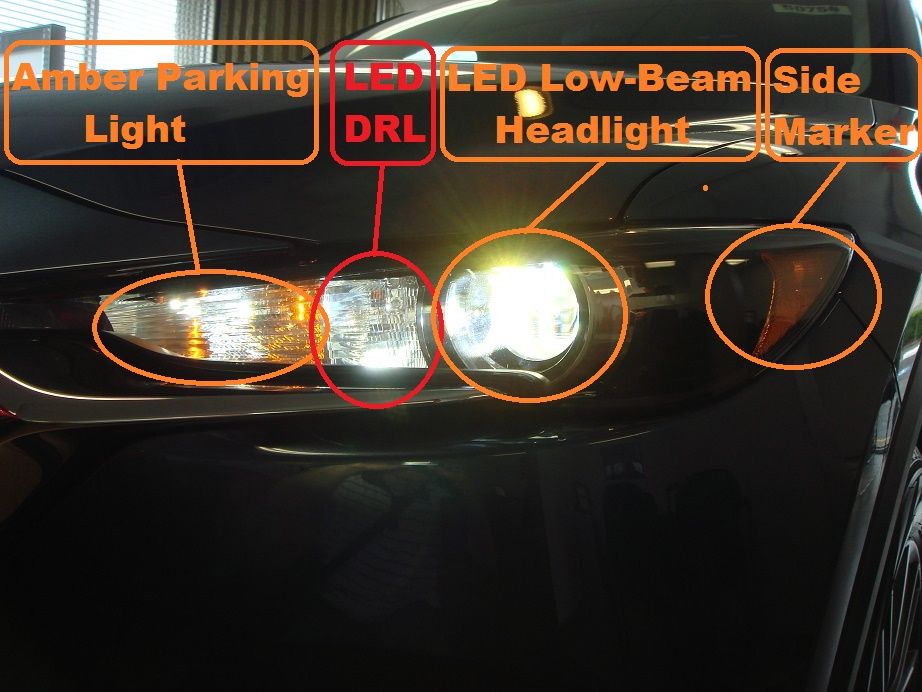
Finally for 2017 CX-5 Touring the high-beam is from the same LED cell for the low beam in the projector, and use a shutter to control them like 2015 bi-xenon HID. For 2016 LED headlights we have a separate LED cell at inner side of the low beam LED dedicated for high beam only.
View attachment 216512 View attachment 216513 View attachment 216515 View attachment 216514
Totally agree with you! And this's the same setup our 2016(.5) CX-5 GT with Tech Package gets too!Ding ding ding! That's how it should look in all countries where its legal by law.⋯ But I can't figure out who gets this setup, which is perfect.

Yep some areas such as Taiwan even the top trim CX-5 diesel uses flip-up screen for ADD/HUD.I noticed the HUD on this one still uses the plastic flappy screen.
Some countries from what I have seen have this instead of windscreen projected HUDI noticed the HUD on this one still uses the plastic flappy screen.
We should see the video clip of this one because if memory serves this could just be parkers on. Hmmmm (uhm)Totally agree with you! And this's the same setup our 2016(.5) CX-5 GT with Tech Package gets too!
I believe this perfect DRL setup on 2017 CX-5 is from Germany.
I just saw one drive past and it had the headlights on too with the signature LEDs. It's day time and when I looked in my rear vision mirrors tail lights were off so it looks to be in DRL mode with headlights also on. [emoji1304] At least there's a way around it as discussed in this thread [emoji1303]
Sent from my iPhone using Tapatalk

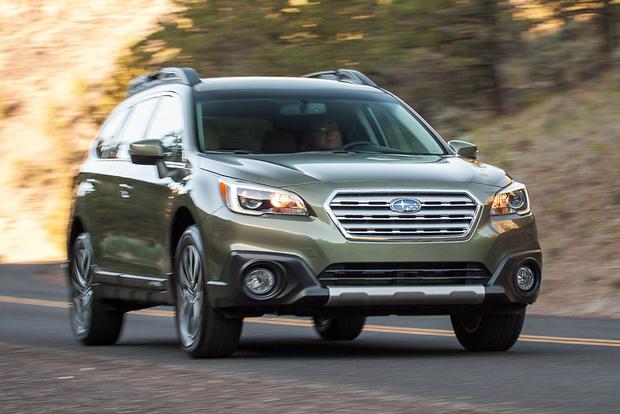
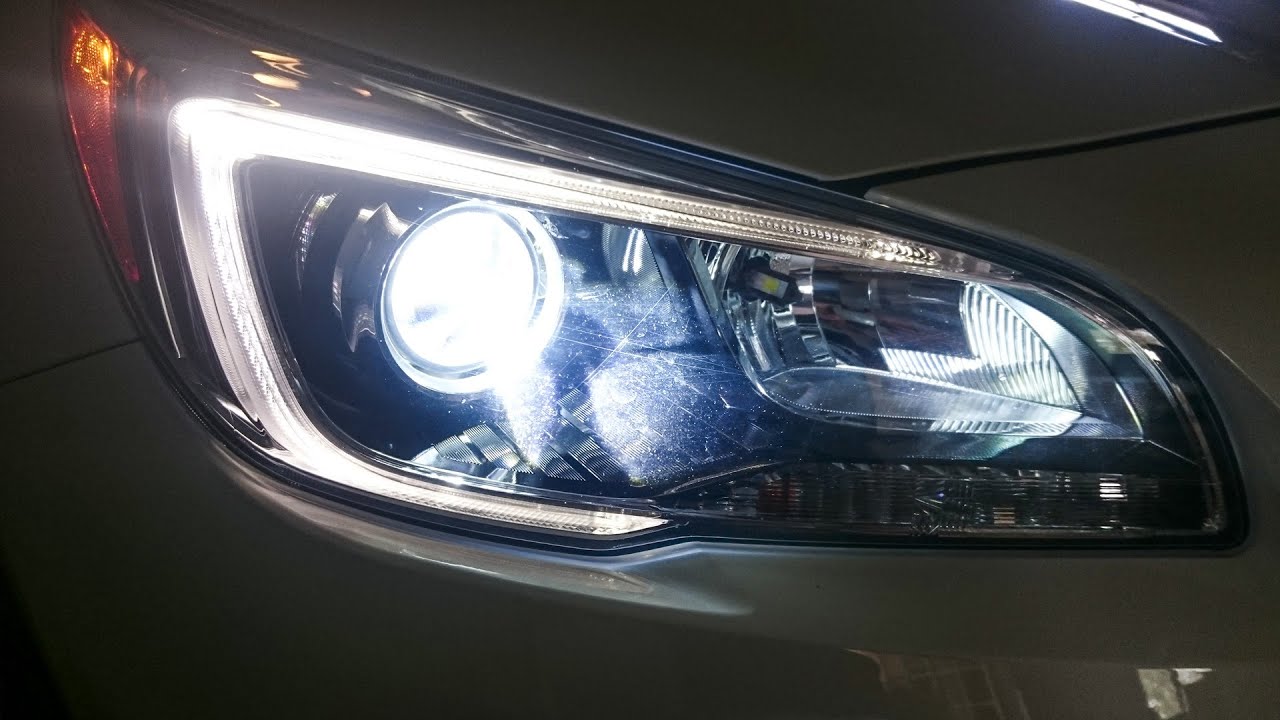
I agree. But it's a bad design choice for US customers.The DRL configuration was a design choice by Mazda.
Most regions with specific DRL regulation have imposed upper limit of brightness due to glare concerns and added power consumption. European Union Directive 2008/89/EC specifies "functional piggybacking, such as operating the headlamps or front turn signals or fog lamps as DRLs, is not permitted; DRLs compliant with R87 emit white light of between 400 and 1,200 candela."The accent lighting on it's own isn't bright enough to be allowed to be considered the DRL - at least not where I am located.
New Subaru Outback has both LED accent strips and reduce-powered halogen high beams serving as DRLs is a bad choices too . The reason I believe is Subaru is trying not to change any DRL wires hooked to high beam halogen bulb from lower trims without LED accent strips. In any event it's only a halogen bulb and can be easily and cheaply replaced without consuming any life of low beams which are used the most during the dark.Someone else much earlier in this thread, or possibly another, argued that there is no other car on the road that has an LED accent light that isn't used as the DRL. At the time I found a couple of cars that use LED headlights as DRL's but that wasn't good enough for them and I didn't care enough to waste time searching.
Well, one fell in my lap this weekend. I have just noticed that my brother's Subaru Outback is the exact same - even "worse" (subjectively) as it has LED accent lighting, HID headlights and halogen high beams and they use the halogen high beam as the actual DRL. The accent lighting remains on when the headlights are on. Why? Simply to add style to the headlight housing. There's no other reason for it - much like the accent lighting on the CX-5 GTs.

It's highly unlikely from the design point of view squeezing multiple LED light sources into one projector housing. Not to mention Mazda uses 2 separate LED light sources on low beam and high beam for 2016(.5) CX-5 with LED headlights, but now for 2017 it gets consolidated into one. Cost reduction is more important than longevity. And the number of failures from 2016 CX-5 LED accent strip DRLs is alarming!We all know DRL comes from the headlight housing and is lower power / brightness. Has anyone confirmed that there isn't a separate LED in the projector itself that's dedicated for DRL mode or that it is in fact the same element? That's entirely possible, but I can't confirm it. If however that's the case it would eliminate the argument / lifespan concern.
It's also entirely possible it's the same LED at a lower brightness, or even a 3rd stage to the motorized reflector in the bowl to block more light at the same element brightness.
My point is arguing the viability and reliability of the design is a moot point and pure speculation until it is confirmed how the headlights are engineered and failures start happening,then determining the cause behind those failures.
Some people may like this halos for good looking. But others may have serious concerns about the longevity of our LED headlights due to very expensive cost of replacement. This's definitely a bad design for US customers as Mazda put an unnecessary risk of high maintenance cost for something unnecessary and not required by regulation, not to mention the setup is disliked by many! Once you're out of warranty with a broken low beam due to overuse, you're out of luck! (boom08)The only argument is that it doesn't look the way you want it to because you'd like it to look like a Bimmer with it's halos, and that's fine, but it doesn't make the design "wrong".
Looks promising and looks like it has some inner parker lights on together with the halos or is it actually in Parker mode with tail lights on? Hmm. I need to wait till I see more on the roads before I'm able to catch one on the move conclusively or check one out at the dealers on my next service interval.
If the LED signature accent strips on 2016(.5) CX-5 can be US legal DRLs without LED headlights, I simply don't see why Gen-2 CX-5 can't be set up the same way?i am a little disappointed with the LED DRL accent strips in the 17-18 CX5. They have notably much less power output than other DRLs you see on the market. During the day, they don't really stand out like other DRLs, and in sunlight, they almost have a yellowish tint to them almost as if they were halogens. At night though, they look incredible. I wonder if it's done like this intentionally for either longevity or because of the DRL/Turn signal laws here in the US. Perhaps if they made the LEDs too bright then it would wash out the turn signal--making it illegal unless they turn off the accent strip--which just really sucks on every level when car companies have to do this. In that case, I would take a dimmer DRL. However, other car manufacturers like mercedes worked around this by incorporating a bright LED turn signal either underneath or above the headlight.
i am a little disappointed with the LED DRL accent strips in the 17-18 CX5. They have notably much less power output than other DRLs you see on the market. During the day, they don't really stand out like other DRLs, and in sunlight, they almost have a yellowish tint to them almost as if they were halogens. At night though, they look incredible. I wonder if it's done like this intentionally for either longevity or because of the DRL/Turn signal laws here in the US. Perhaps if they made the LEDs too bright then it would wash out the turn signal--making it illegal unless they turn off the accent strip--which just really sucks on every level when car companies have to do this. In that case, I would take a dimmer DRL. However, other car manufacturers like mercedes worked around this by incorporating a bright LED turn signal either underneath or above the headlight.
I'm a true believer in DRLs, but I don't like the gen2 GT setup.If the LED signature accent strips on 2016(.5) CX-5 can be US legal DRLs without LED headlights, I simply don't see why Gen-2 CX-5 can't be set up the same way?
